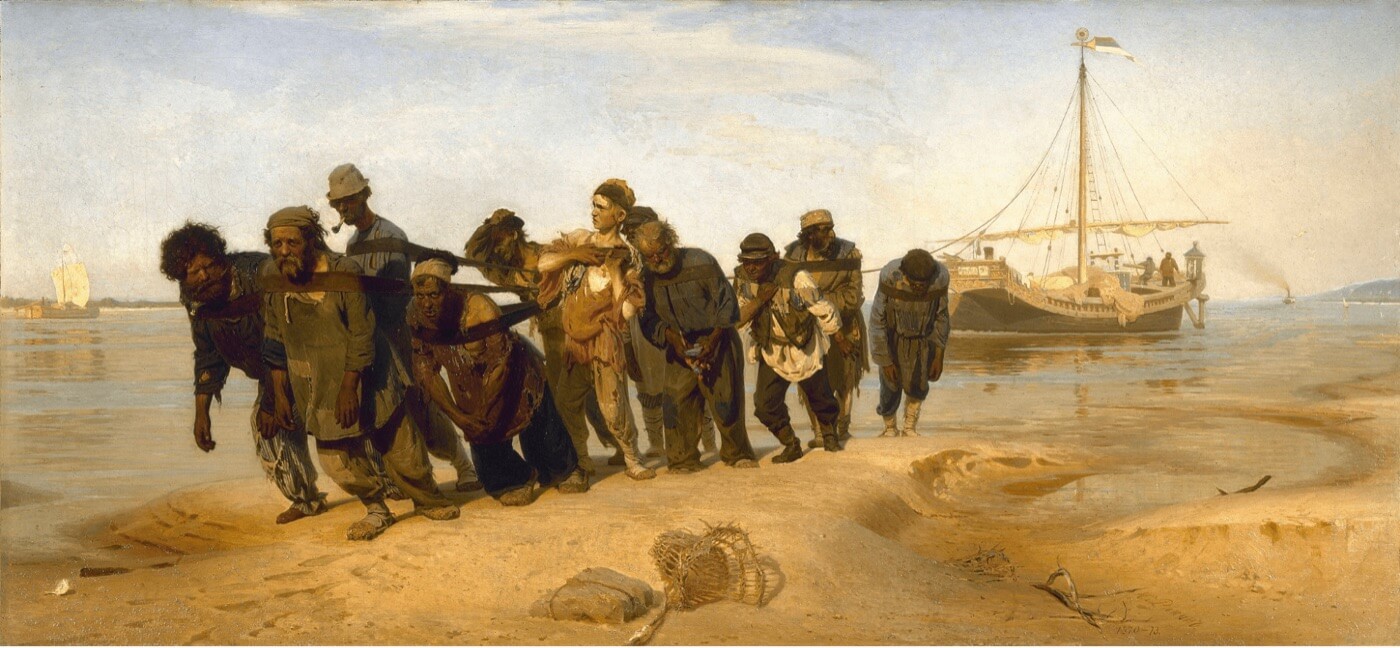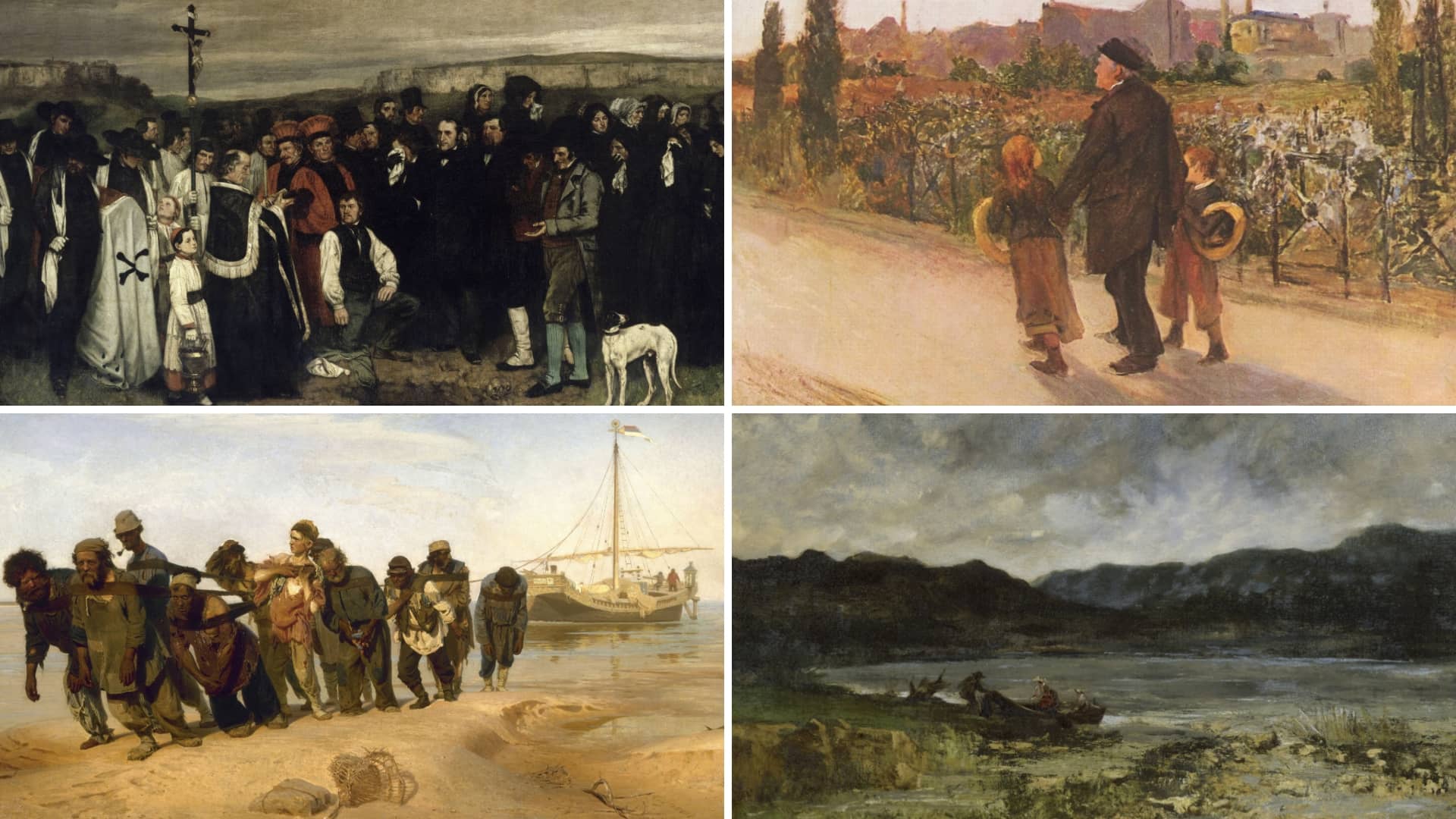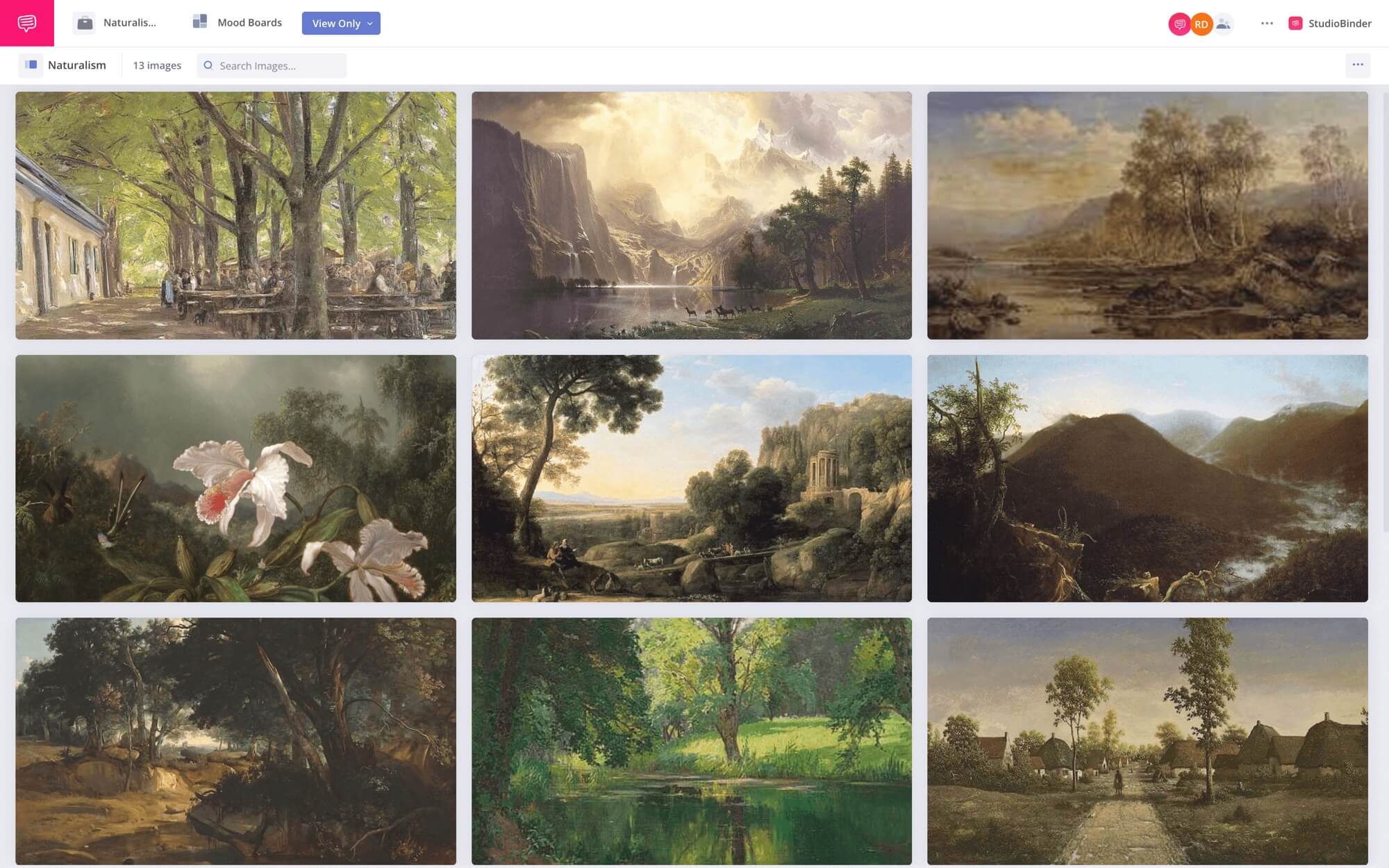Picture this: you’re at an art gallery, and you come across a painting that looks so real, you feel like you could step right into it. Well, you’ve probably stumbled upon a work of Naturalism. But what exactly is Naturalism in art? How did it emerge, and what sets it apart from other art movements?
What is Naturalism in Art?
First, let’s define Naturalism in art
In the vast universe of art history, there are countless art styles and movements, each with its very own distinct character and charm. Among these, Naturalism and its distinct qualities stand as one of the most fascinating.
NATURALISM DEFINITION IN ART
What is Naturalism in art?
Naturalism, as an art movement, is a precise and unadulterated representation of reality. It's like the artist's lens is focused on capturing the world precisely as it is, with no exaggerations or embellishments. This art movement thrives on the depiction of realistic subjects in a natural setting. It's the visual equivalent of holding up a mirror to society and the world at large.
Characteristics of the Naturalism Art Movement:
- Unadulterated reality
- Depicts natural settings
- Reflects society
Naturalism Art History
Historical roots of Naturalism
So, how did Naturalism come to be? What historical events or transitions led to the birth of this art movement that so vividly mirrors reality? Let's find out.
For a general idea of the naturalism in art, we've collected some of the best naturalism paintings in StudioBinder's mood board creator. Click the image below to explore the collection and you can even download a PDF for future reference and inspiration.
Naturalism Paintings Collection
Tracing Back to the Origins
Let's take a step back in time, specifically to the mid-19th century. This was when Naturalism started to take root, primarily in France. The world was going through the Industrial Revolution and societies were transforming at an unprecedented pace.
Amidst all this change, artists began to see things differently. Naturalism artists wanted to depict life as it was, raw and unfiltered, rather than presenting an idealized version of it.
In this era of transformation, Gustave Courbet emerged as a pioneering figure. Known widely as the 'father' of Naturalism, Courbet dared to step away from traditional norms.
His naturalism painting A Burial at Ornans is a testament to this, as it brought to canvas the reality of ordinary people and everyday events.

A Burial at Ornans (1851) by Gustave Courbet
Societal and Cultural Factors
The mid-to-late 19th century was a period of significant social and economic change. The Industrial Revolution had altered the fabric of society, leading to urbanization and a new focus on the working class.
Artists began to reflect these changes in their work, focusing on realistic portrayals of everyday life. They moved away from the grandeur and romanticism of previous art movements. Instead, they chose to capture the world as they saw it, warts and all. This shift marked the birth of Naturalism.
One of the most iconic examples of Naturalism is Édouard Manet's Le Déjeuner sur l'herbe ("The Luncheon on the Grass"). Painted in 1863, this artwork was scandalous and audacious, capturing an unembellished depiction of society and challenging traditional norms.

Le Déjeuner sur l'herbe (1863) by Édouard Manet
Then there's Ilya Repin's Barge Haulers on the Volga a vivid portrayal of laborers struggling under harsh conditions. The Naturalism painting is a powerful example of the movement's focus on the realities of working-class life.

Barge Haulers on the Volga (1870-1873) by Ilya Repin
These works, and many others, highlight the unique ability of Naturalism to depict ordinary life in an extraordinary manner, turning the mundane into something truly remarkable.
Related Posts
What is Naturalism in Art Defined By?
Characteristics of Naturalism
Naturalism's characteristics are more than just stylistic choices. They're a statement about the world we live in and the stories we choose to tell – and that's what makes them so significant in the art world.
Unvarnished Truth
The first and perhaps most prominent characteristic of Naturalism is its dedication to presenting reality unfiltered. This isn't about creating an idealized version of the world, but rather portraying things exactly as they are.
Think of a painting capturing a bustling city street – not just the grandeur of the architecture, but also the grime on the pavements and the weary expressions of the pedestrians.
Detailed Realism
Detailing is another hallmark of Naturalism. Artists painstakingly capture every minute detail of the subjects they're representing, from the texture of an old man's skin to the way light reflects off a dew-soaked leaf.
It's akin to reading a richly descriptive novel, where the author leaves nothing to your imagination.
Everyday Subjects
Naturalism doesn't concern itself with the extraordinary or the heroic. Instead, it focuses on everyday life and ordinary people. A naturalistic painting might depict a woman doing laundry or a group of men playing cards in a tavern – mundane scenes that nevertheless tell compelling stories.
The significance of naturalistic style is twofold. Firstly, they force us to confront realities we might otherwise ignore by portraying the world in all its unadorned truth.
Secondly, naturalism's allows viewers to connect more deeply with the artwork, fostering empathy and connection. By focusing on everyday subjects, Naturalism in art gives a voice to the often overlooked and broadens our understanding of the human experience.
What is Naturalism in Art Defined By?
Naturalism vs Realism
Naturalism’s close cousin is realism. They have some overlap, but the two schools of style are in fact distinct. Let’s nail down the difference between naturalism and realism.
First, it’s important to note that the definitions of both styles shift depending on the medium. In literature, naturalism typically has a darker tone than realism.
Both styles are preoccupied with depicting “reality,” but they have different perceptions of it. Realist writers believe that their characters have free will and control over their lives. This typically results in more hopeful narratives– rags to riches, overcoming obstacles, etc..
Naturalists, however, have a more deterministic view. Their characters’ lives are completely shaped by outside forces, whether it be society or nature. Many naturalist narratives show disadvantaged characters getting pummeled by structures outside of their control.
In art, the two fields are pretty different. Naturalist paintings are primarily concerned with showing beatific natural scenes– idyllic pastures, grand undeveloped landscapes.

“Sunrise in the Catskill Mountains” by Thomas Cole, a naturalist painting
Realist paintings, meanwhile, focus on the hardships of the proletariat. Realists would paint toiling farmers, struggling seamstresses, overworked manual laborers.

“The Angelus” by Jean-François Millet, a realist painting
It’s a far cry from the gorgeous natural world on which naturalists focused.
Naturalism Artists Today
Evolution and Impact of Naturalism
Naturalism has beautifully evolved and unfurled its influence across time. It's not just a movement confined to history; it continues to breathe life into contemporary art and culture.
The Evolutionary Journey
Naturalism started as a reaction to Romanticism, a movement that often idealized its subjects. In stark contrast, Naturalism embraced reality in all its rawness. Over time, this movement adapted and changed, subtly influencing and being influenced by other movements like Realism and Impressionism.
Un dimanche après-midi à l'Île de la Grande Jatte (1884-1886) by Georges Seurat
Today, we see its legacy in the hyper-realistic works of artists who, much like their Naturalist predecessors, strive to depict the world with startling accuracy.
The Artistic Influence
Naturalism's impact echoes in the corridors of modern art. Contemporary artists continue to draw inspiration from this movement, appreciating the beauty in everyday life and finding extraordinary stories in ordinary moments.
This influence is evident in the works of artists like Richard Estes and Chuck Close, who are known for their meticulous detail and uncompromising realism.
The Cultural Ripple Effect
Beyond the canvas, Naturalism has left a profound imprint on our society and culture. Its commitment to authenticity has encouraged a more honest conversation about the human experience. It's helped us appreciate the beauty of simplicity and find value in the mundane.
Naturalism's evolution is a testament to its enduring relevance. Its impact on art and society underscores the power of truth and authenticity, principles that continue to resonate in today's world.
UP NEXT
Explore More Styles and Movements
This was just one of many fascinating segments of art history. There are many eras, styles, artists, and movements to discover. Let's continue our study by choosing the next stop on your way to becoming an art aficionado. Below you can visit our Art Styles Index, our Art History Timeline, or choose an individual movement.
Share your vision with elegant shot lists and storyboards.
Create robust and customizable shot lists. Upload images to make storyboards and slideshows.

